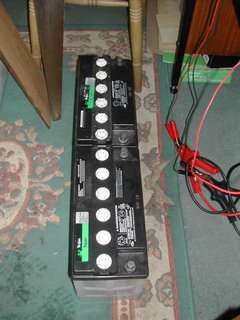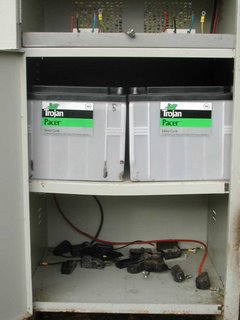
Part of my renewable energy remit, has been to generate my own electricity using waste vegetable oil, using a modified diesel engine, and use the waste heat to contribute to my home heating.
I would like to reach the point where all my domestic energy either comes from waste veg oil or from firewood.
With the recent 15% rise in prices - my domestic energy bills are now costing me about £3.00 per day in December so I am interested in exploring other options.
In any modern home, one is increasingly dependent on electric appliances, and with the threat of power cuts and rising electricity prices it is important to have a back-up so that you can remain comfortable should the supply be disrupted.
It is getting more difficult to have a home that runs on just gas, and reaching for the candles when the lights go out may be romantic but hardly practical. Modern gas boilers rely on having a maintained electricity supply to keep them operational, so if the power goes off - so does the heating.

It is for this reason that I have decided on a set of contingency plans to keep the home warm and functional even if the power goes off.
I recently "invested" in an emergency back up supply, previously used in a Bingo hall in Port Talbot to power the emergency lighting.
The unit contains sufficient lead acid batteries to allow the electricity to be maintained for several hours, during a power cut, or ultimately, replace the incoming mains electricity all together.
I hauled the unit back from Wales yesterday, a large 6' tall cabinet, 28" wide and 28"deep, that contains the battery charger, the inverters and the lead acid batteries - a complete (but very heavy) floor standing unit.
It uses 9 lead acid batteries to run the inverter from 108V dc, and there are 2 of the 2.5kW inverters linker together to make 5kW.
I am in the process of recharging my batch of 160Ah batteries, which I hope will run this unit for about 24 hours on my current electricity usage.
The back-up supply unit will be housed in the shed, along with the veg oil diesel generator. When the mains supply fails, the control system disconnects the house wiring from the incoming meter supply (to maintain safety) and then starts up the inverters. These will continue to run either until the mains supply is restored or the batteries reach their lower charge limit.
The intention is that the Lister generator can be started daily to recharge the batteries, and keep them permanently topped up. It will run for several hours at a time at close to peak output and then shut down when the battery bank is fully charged.
When mains electricity is available, the batteries can be recharged directly. It would even be possible to recharge the batteries at night using cheap rate power, and then run the house off the batteries during the day. This could potentially save about £60 per year based on existing electricity usage.
The batteries are Trojan Pacer types and originally rated at 160Ah. Because they have already done a season or more in an electric car, I do not expect them to be capable of much more than 100Ah. I am currently in the process of giving all the batteries an individual top-up charge, and if necessary run a desulphator unit on them. See here for more detailson desulphators:
http://www.flex.com/~kalepa/lowpower.htm

It is hoped that I can make the generator and battery charging automatic, so no intervention is needed on a day today basis.
Once a week, the fuel tank will be refilled and the batteries topped up with distilled water if necessary.
Lead acid batteries are cost effective for this type of application, provided that they are kept in a good state of charge and free from frost.

Now that I have the battery bank and inverters, the possibility exists to expand the system to use photovoltaic panels to recharge the batteries or possibly a wind generator. However as these options would both be quite costly to implement, it is unlikely that I will persue them for the moment.